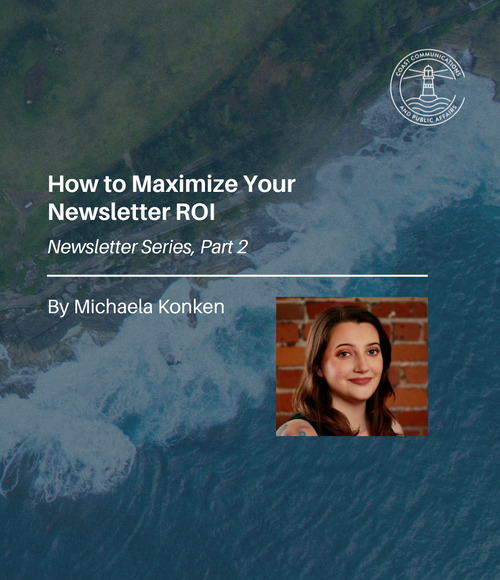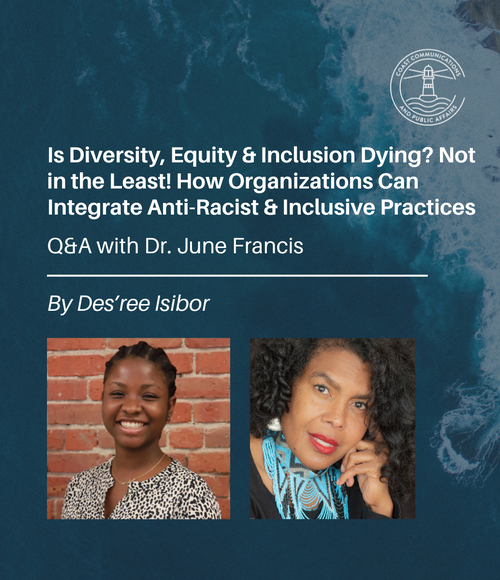In today’s digital world, with more and more eyes on external communications, it's easy to become overly focused on media coverage and sponsored content, forgetting about the humble but all-important newsletter.
What’s wrong with a media release? Absolutely nothing, depending on what your organization is trying to achieve.
But it’s a comms best practice to keep in mind the four types of content: Paid, Earned, Shared and Owned — the PESO model. Organizations often put too much focus on Earned — the enthusiastic pitching to try to get media coverage. This can be inefficient because organizations, especially non-profits, don’t always have the time and resources to maximize on their media relations efforts. Plus, newsrooms continue to shrink, reducing the chances your release gets covered. And don’t forget that getting media coverage of good news, unless the impacts are far reaching, is a tough row to hoe.
By overly focusing on Earned, a lot of organizations tend to neglect what they have full control over: Owned content. This encompasses tactics and collateral like your newsletter, website, social media posts, blog and internal communications. We love all these tools!
They are the tools you can use to tell your story exactly the way you want. You have the control. They are often very easily measured, which increases the chance of tracking against objectives and improving over time. They all produce content that can often be evergreen (useable in different formats over a long period of time). And when leveraged well, it can be a powerful, efficient and affordable way to engage your stakeholders and target audiences — both internal and external. If your distribution list is current, curated and targeted to your audience, this is a very good return on investment!
The Newsletter – the Workhorse of Owned Communications
Newsletters are one of our favourite tools. Email marketing has been around since the dawn of email itself, but it is still around for a reason — it works! For example, average newsletter open rates according to Mailchimp are 40% for non-profits. True, newsletters today look different (remember the 30-page, all text newsletters of a decade ago?), with more and more visuals, listicles and links and great template/distribution tools available (Constant Contact, Mailchimp, etc.) but the core of the format remains.
Here Are the Top 5 Reasons to Have a Regular Newsletter Program

-
Full control over the content without needing to pay-to-play like Paid! By adding your key messages to the newsletter, you can help further your organization’s communications goals.
- You can amplify your mission, vision and values
- This will also help establish your organization as the single source of truth, preventing confusion and misinformation regarding complicated issues or challenges in your sector
- And even if you are paying for email marketing, it delivers an average return on investment of $36 for every $1 spent, according to HubSpot
- Use the untapped potential of your existing audience and connect with them. You already have contacts, supporters and viewers, and a newsletter program helps you build and maintain relationships with them. What are you doing with your contacts if you’re not talking advantage of the opportunity to spread your message? And don’t forget, they can translate your owned into shared when your contacts forward on your newsletters
- Showcase your expertise in your sector or on specific or emerging topics by sharing thought leadership pieces, insights or tips. Provide value versus just promotion
-
Raise awareness of your organization’s work by celebrating successes, highlighting programs, feature your people and partners and driving readers to visit your website and social media channels. People are busy, so newsletters help keep them informed and remind them about what you offer
- Communicating updates to supporters and donors is critical to keep them engaged
- This will be important in the future if you need to build a large base of supporters and convert them to validators
- Include articles and photos profiling your people and partners
- Establish trust by sharing regular and accurate information. It takes time to build sustained trust with your stakeholders. And it’s something all organizations wish they had when a reputational crisis arises. Be proactive and start building reputational capital now through relevant and timely updates and information in your newsletter
With a regular newsletter program, your organization can increase and engage its audience, ensuring that supporters, partners, donors and community members are kept informed on your important work.
Do you need help starting or refreshing your newsletter program? Coast Comms can help! Reach out to us at info@coastcomms.ca.
Looking for more advice on how to maximize your newsletter and use it to its full potential? Check out the Part 2 of the newsletter blog series here.
And don’t forget to subscribe to Coast Comms’ own newsletter Coast Insights for best practices, tips and insights!



